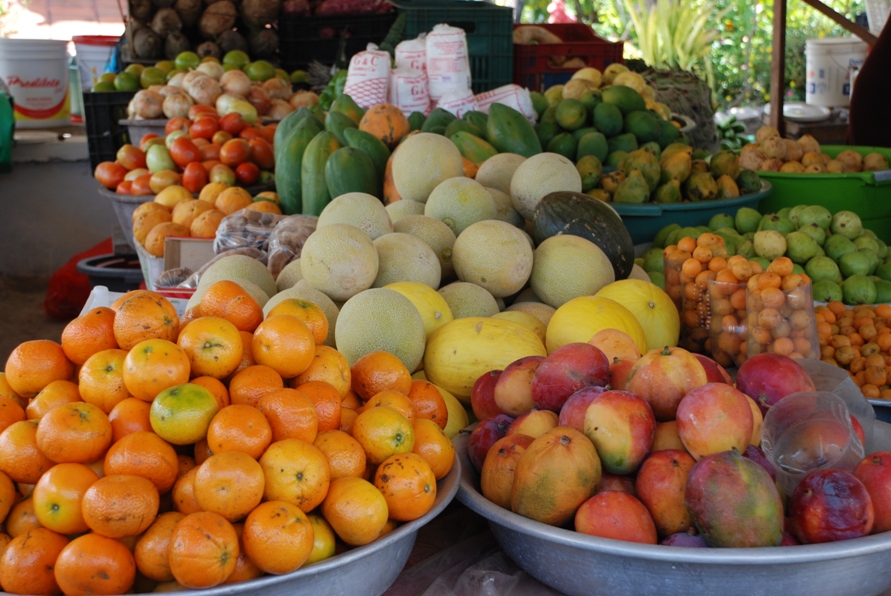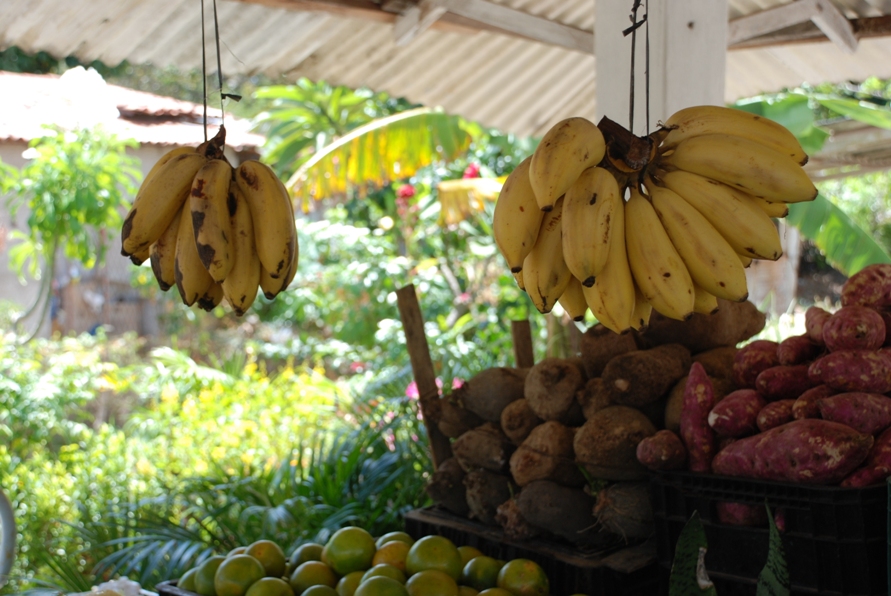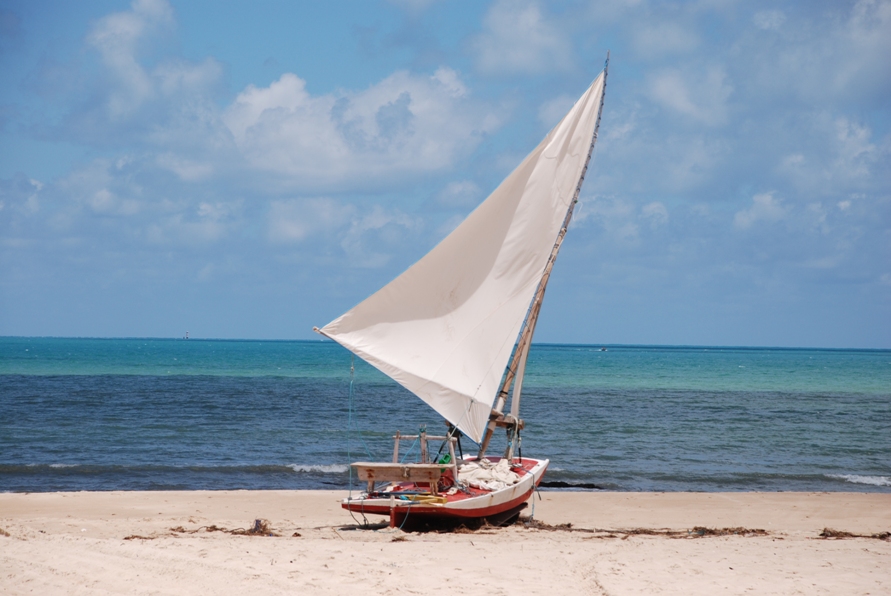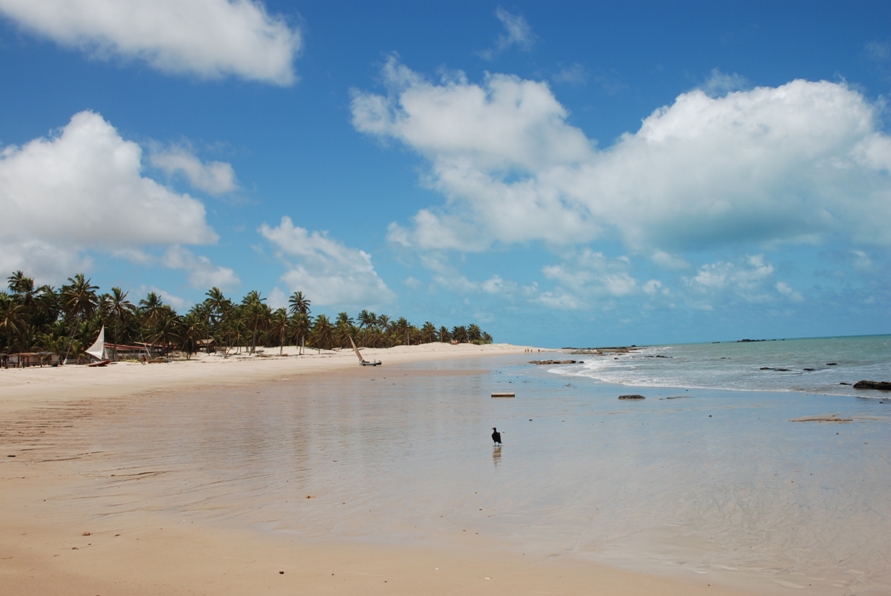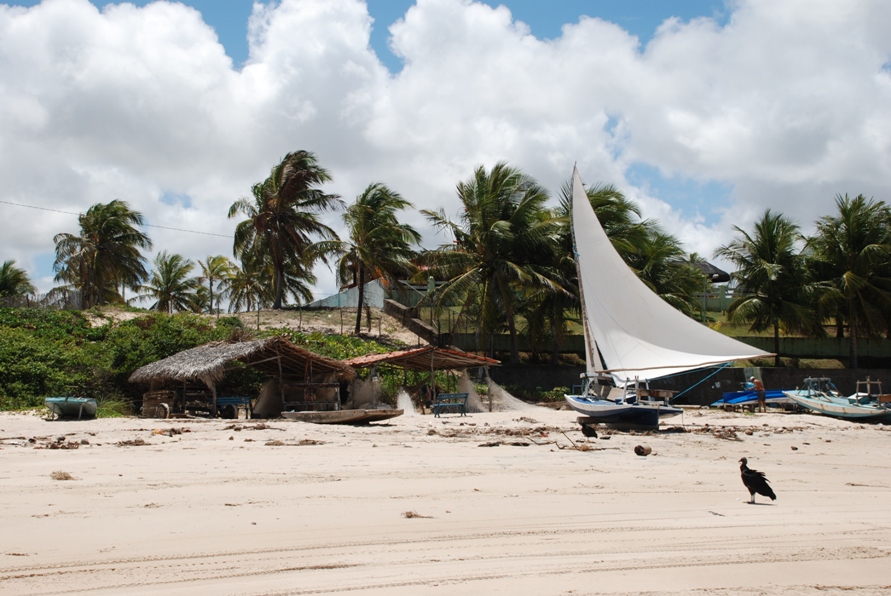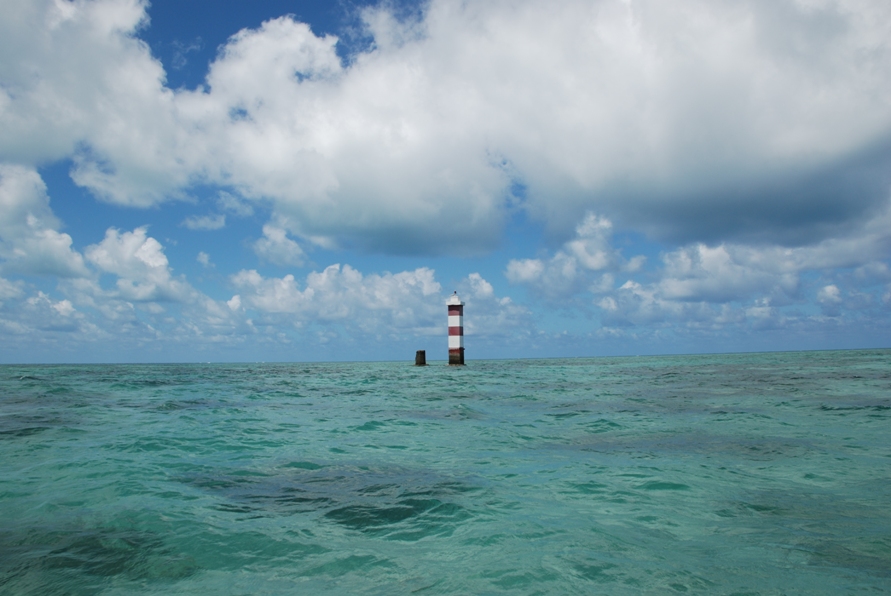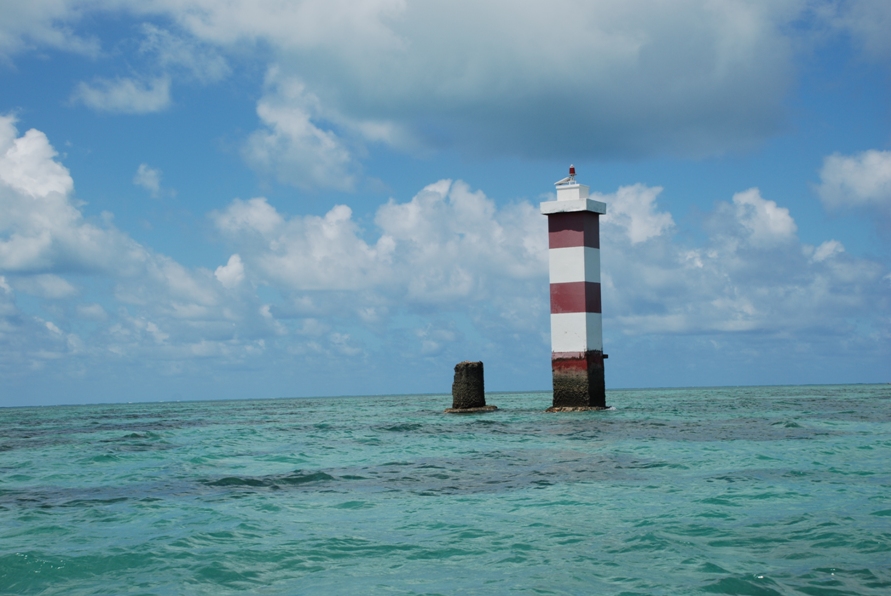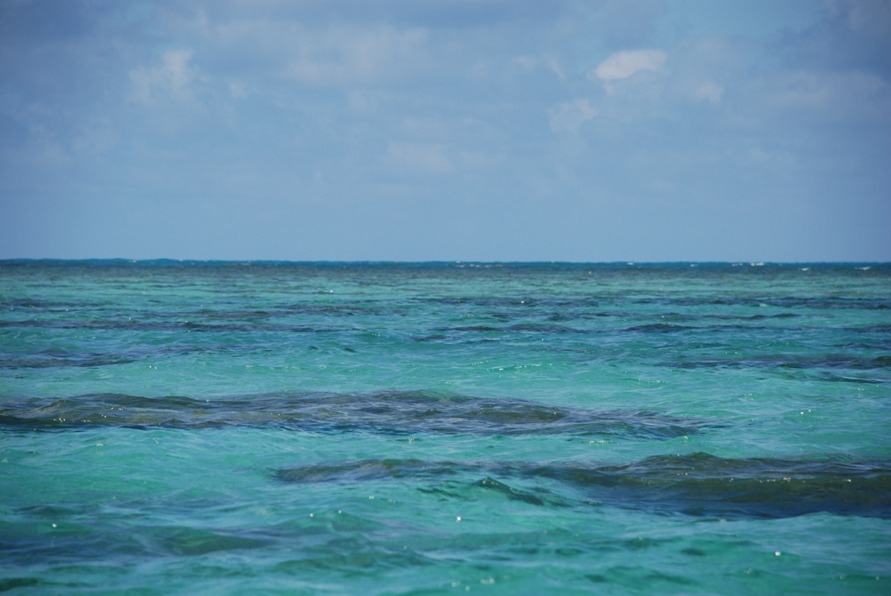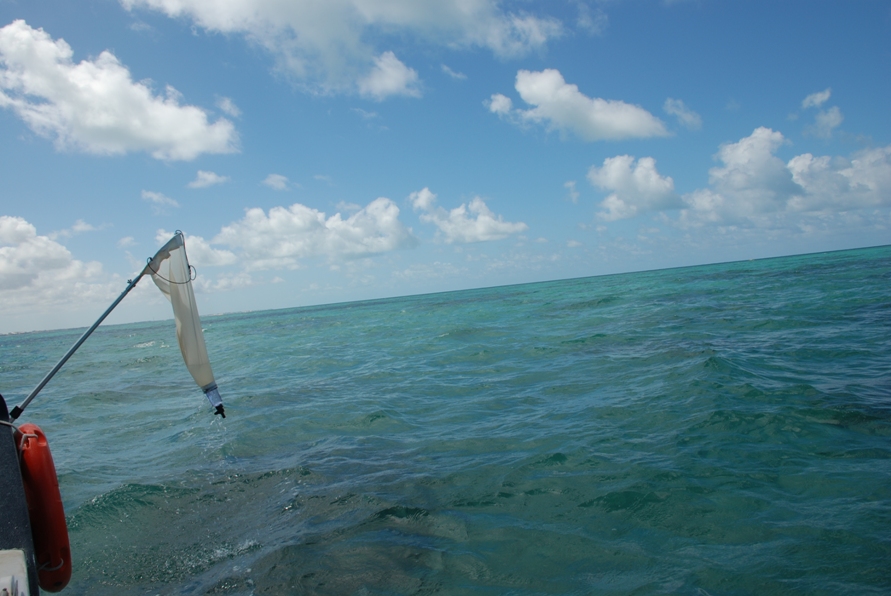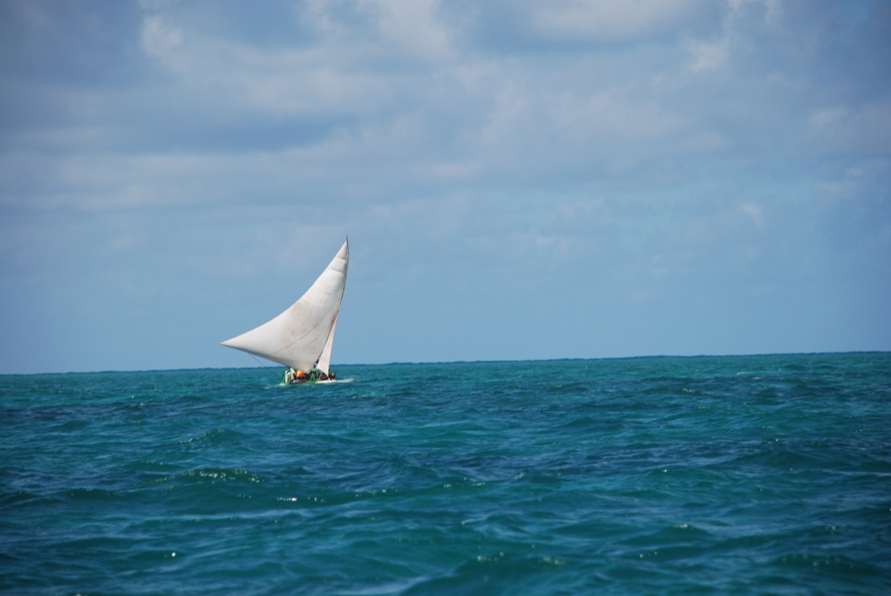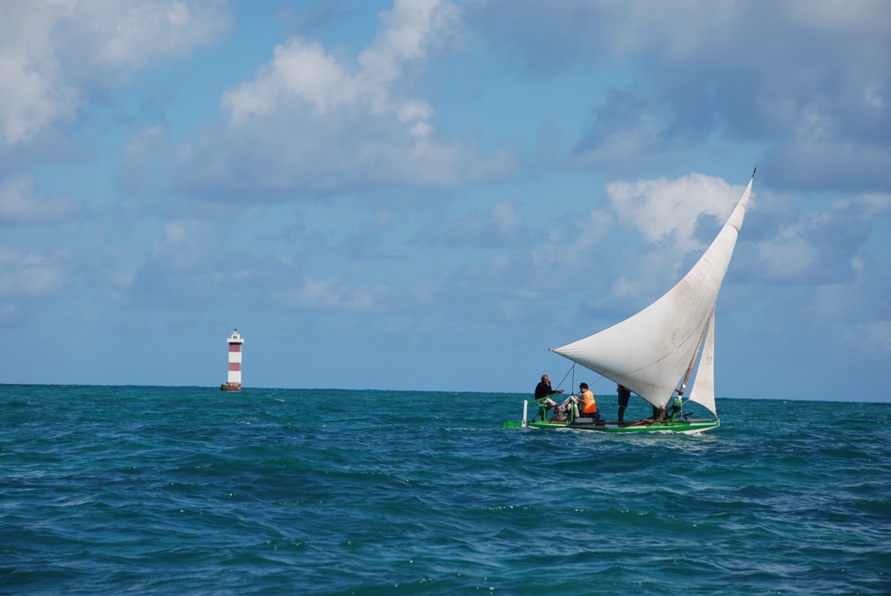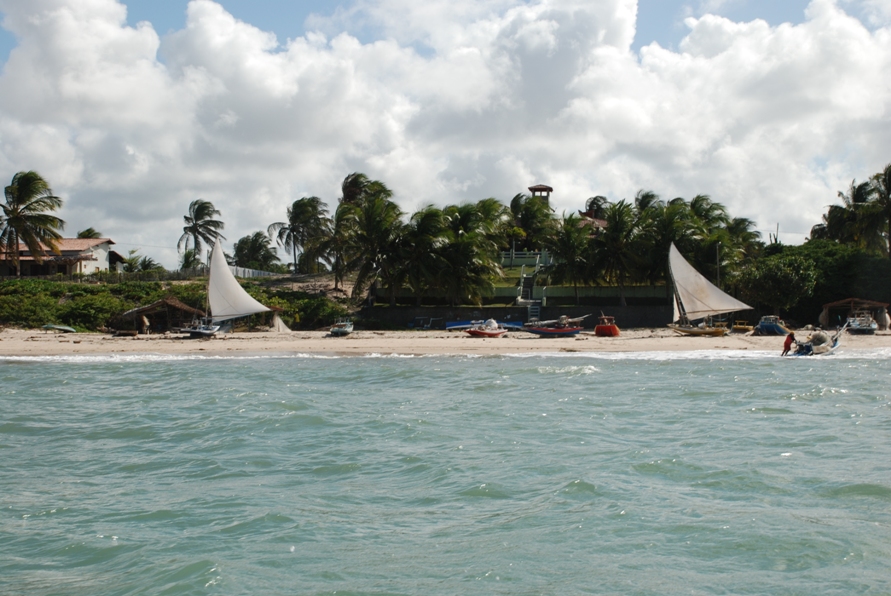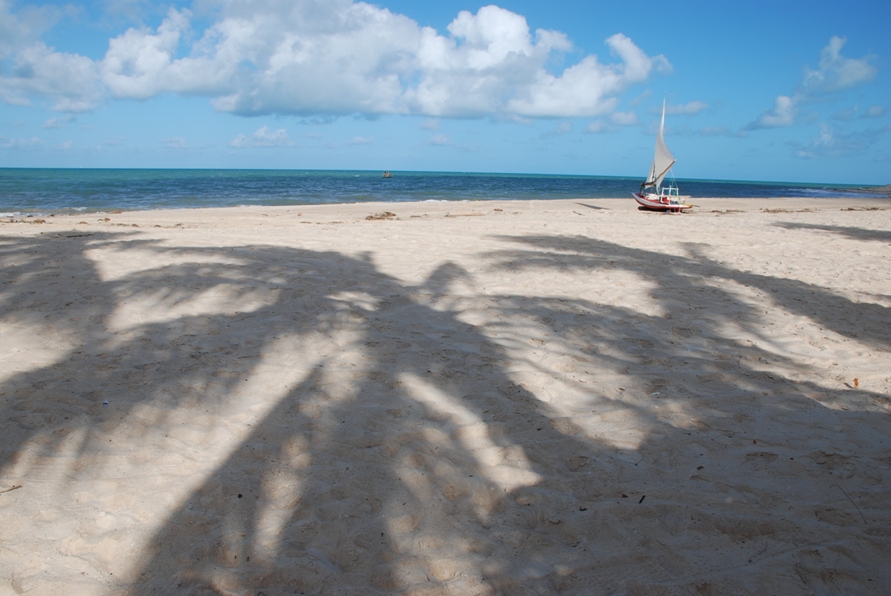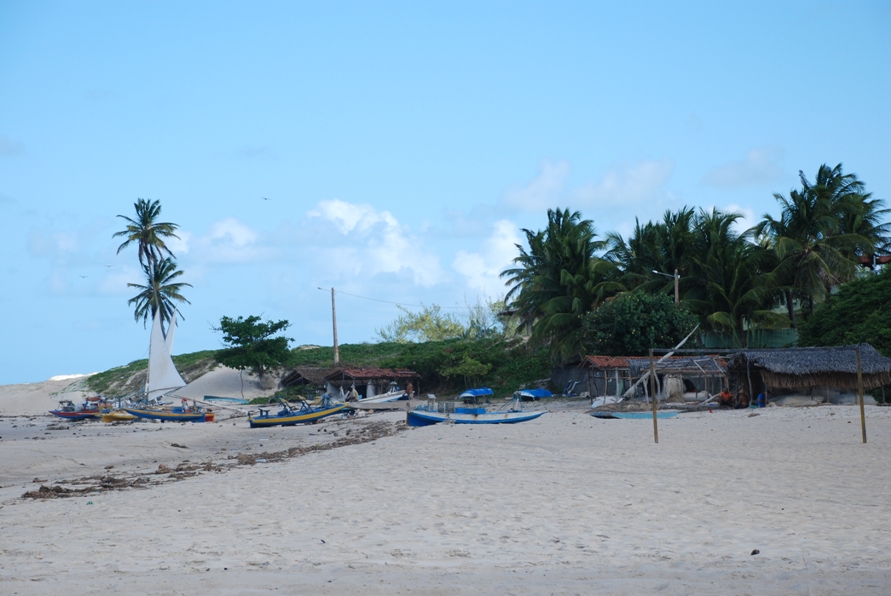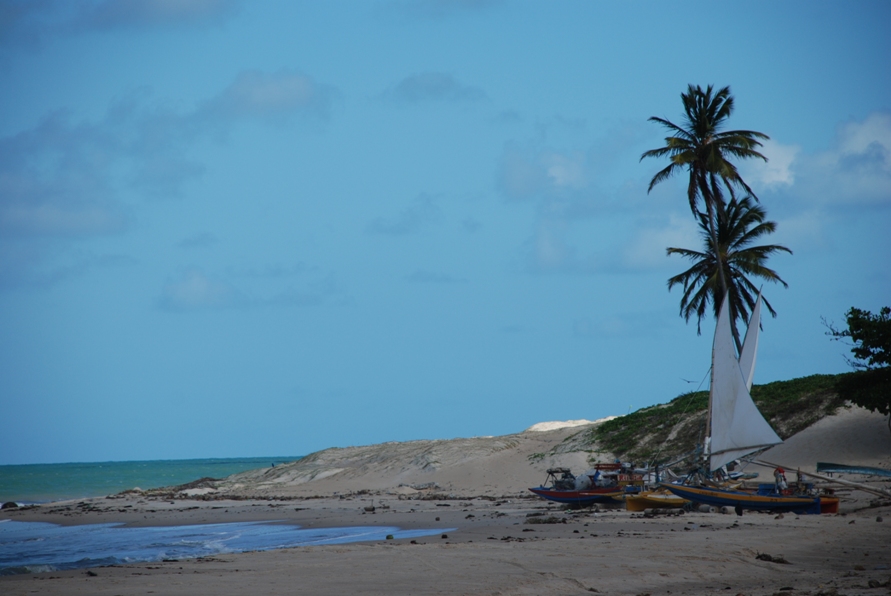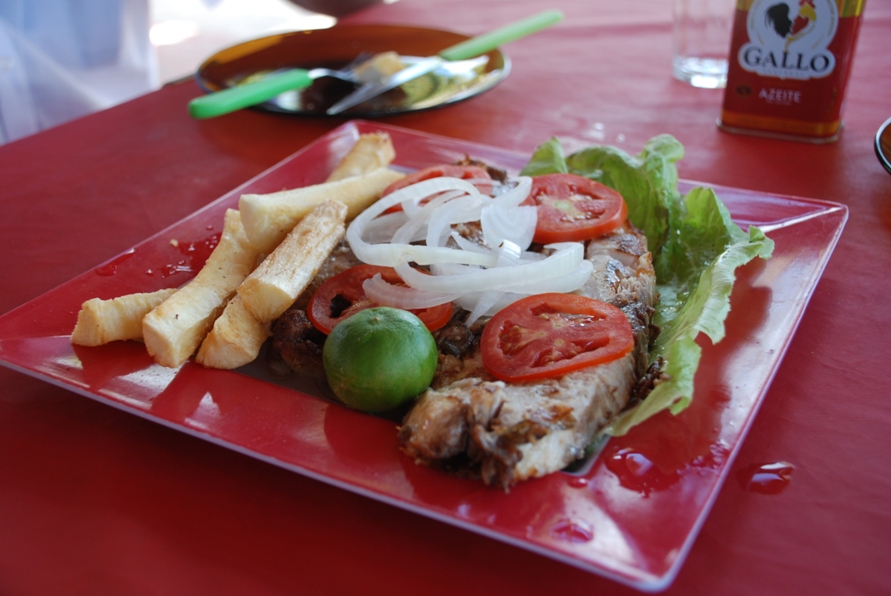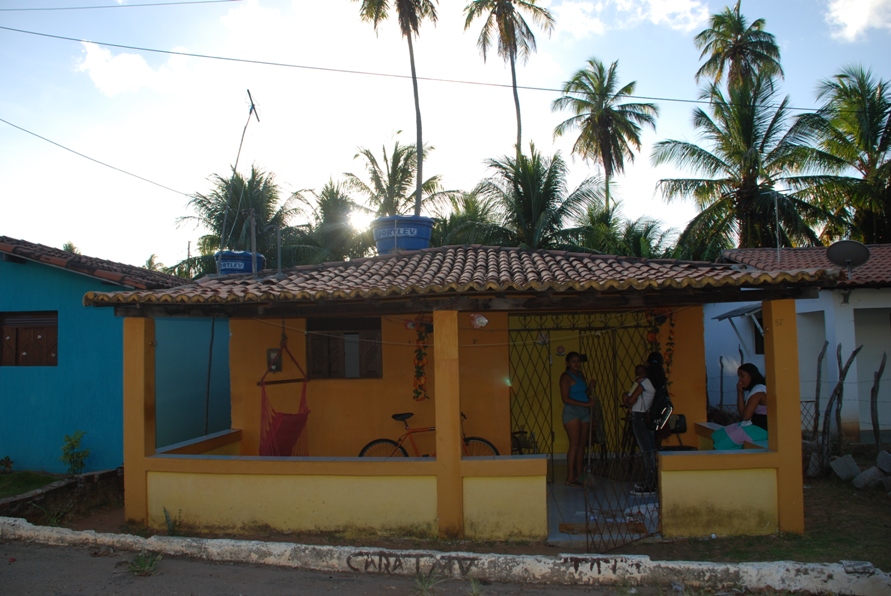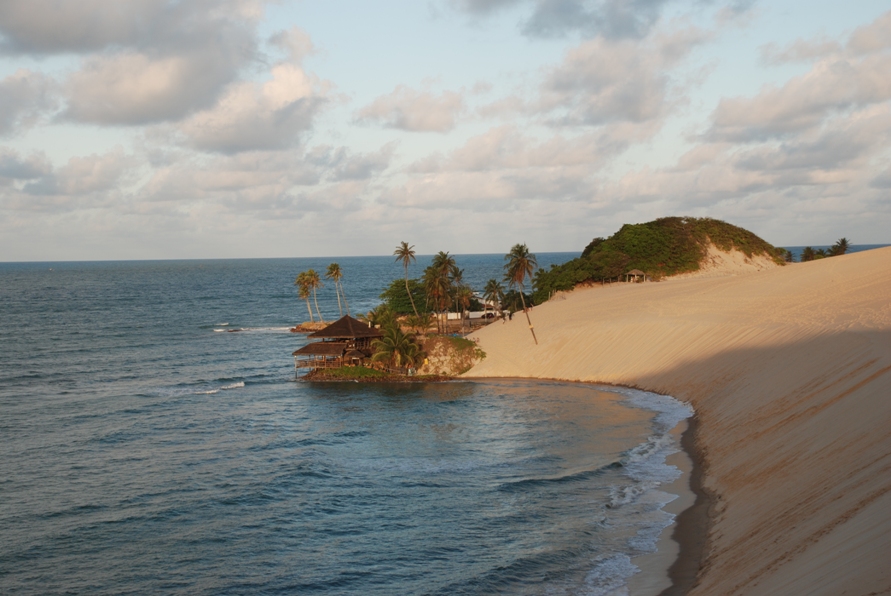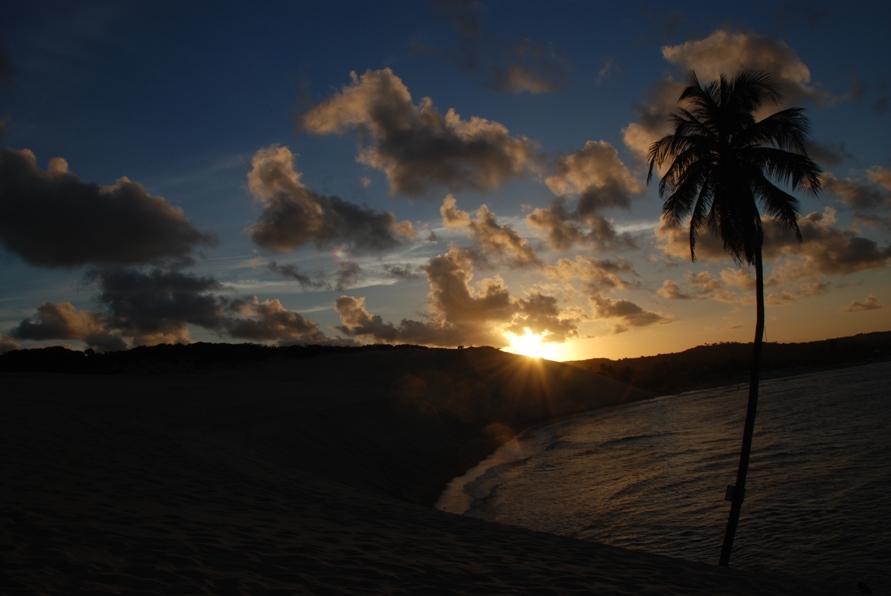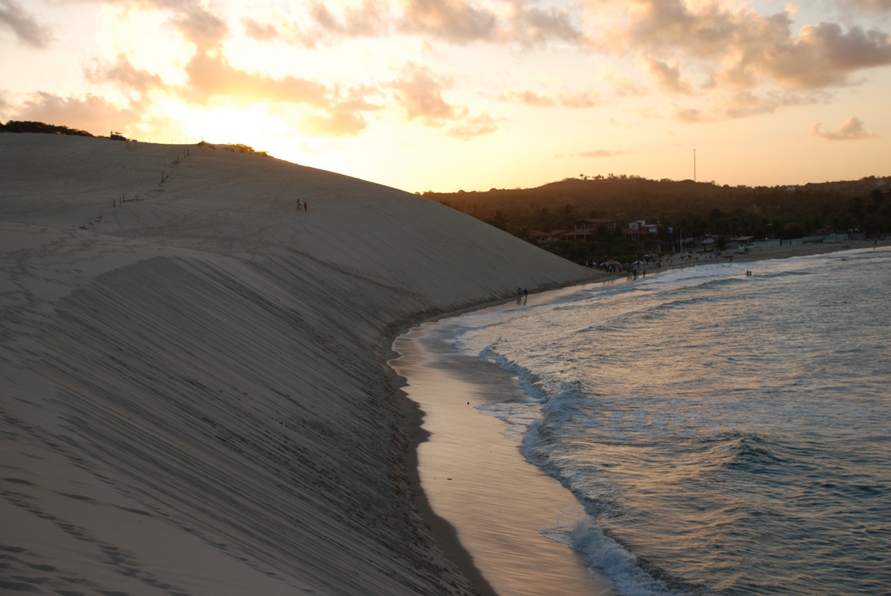Brazil
The Brazilian Coastline
Brazil is a privileged country as its territorial extension and location, has a total area of 8,514,876 km square, with a coastline with more than 7000 km long continuous line. The landscape of the Brazilian coast is diverse, consisting of dunes, islands, reefs, rocky coasts, bays, estuaries, swamps and falesias. The region is populated by a huge variety of animals, among them are: dolphins, whales, 800 types of fish, birds, and a variety of vegetables. The most accepted division of brazilian coast is: Litoral amazônico (Amazon coast) – is the coastal region of northern Brazil. Extends from Oiapoque River (AP) to the Parnaíba Delta (between the states of Maranhão and Piauí). The coastline Amazon offers an extensive plain covered by mangroves and marshes, and habitat of various species of fish and birds. Litoral nordestino (Northeastern coast) – the area extends from the Parnaiba Delta to the Reconcavo Baiano, with a length of approximately three thousand kilometers. Its landscape features sand dunes, falesias and mangroves, the climate is pleasant, with high temperatures. Southeast coast – extends from the Reconcavo to the border between the states of São Paulo and Paraná. It has the highest population density of Brazil. South Coast – corresponds to the coast of Paraná, Santa Catarina and Rio Grande do Sul; is characterized by mangroves, falesias and by a continuous strip of beach.
Brazilian Lagoons – along the Brazilian coast are remarkably diffuse coastal lagoons, particularly in the states of Rio de Janeiro and Rio Grande do Sul. The lagoons show a primary productivity comparable to that of estuarine environments and provide many important resources for exploitation by man (fisherie activities, production of macrophytes for food, fertilizer, handicrafts and tourism). The primary production attributed to macrophytes and periphyton is relatively more important than that attributed to phytoplankton. Macrophytes produce residue and increase the heterogeneity of the environment and thus, a greater diversity of macroinvertebrates. In the northern region of the state of Rio de Janeiro, the lagoons have an important social and economic function due to fishing (mainly fish and crustaceans), which is a form of economic livelihood for many local families. These lagoons are also used as areas for recreational purposes. Their origin is linked to the formation of the River Paraíba do Sul delta and is based on fluvial deposits of marine sand occurred in the Quaternary geological era. This type of aquatic ecosystem proved to be highly productive due to the characteristics such as low water and continuous input of dissolved and particulate organic matter from the land. The characteristics of the lagoons and their intrinsic hydrochemical dynamic are directly related to the relative influence of continental and marine waters received. The presence of shallow water and winds allows large variations in terms of materials presence and influences the movement of the water column, thereby enhancing the interaction between the pelagic and benthic compartments. The heterogeneity of morphometric and geomorphologic dynamics observed among neotropical lagoons, is an important aspect, which creates a wide range of ecological gradients and microhabitat, essential for sustaining biodiversity, local or global.
The Northeast region
The brazilian Northeast comprises 9 states: Alagoas, Bahia, Ceará, Maranhão, Paraíba, Pernambuco, Piauí, Rio Grande do Norte, Sergipe and represents 18,26% of the brazilian territory. The Northeast Region of Brazil has several settings regarding the natural aspects of the main elements of nature such as relief, vegetation, climate, hydrography. According to these variations, the region was regionalized and divided into sub-regions, they are the forest zone (“zona da mata” – tropical climate, high temperatures and high rainfall), the middle-northern (“meio-norte” – transition area between the equatorial climate and semi-arid and between savanna and other vegetation, like Cerrado and the Amazon rainforest), rural (“agreste” – between the tropical rain forest and “sertão”, has characteristics ranging from tropical forest, “caatinga” and vegetation of the region dry and hot) and “sertão” (predominantly semi-arid tropical climate, temperatures are high with two well defined seasons, one dry and one wet, however, the rainy season has only three months and long dry spells).
Rio Grande do Norte – RN
The territory of Rio Grande do Norte is located in Northeastern Brazil, is limited to the states of Ceará and Paraíba and by the Atlantic Ocean. The vegetation consists of mangrove areas, a coastal strip of tropical forest and savanna. The coast and the western portion have a tropical climate, whereas the center is semiarid. The territory of RN extends to the Atol das Rocas (Rocas Atoll – approximately 260km northeast from the coastline), a reef formation on a submarine mountain rock substrate, with an area of some 7,5 km2. During high tide only two sandy islands with a maximum height of 3 m above sea level and some isolated calcareous formations, the “rocas”, stand above water. During the low tide, the reef ring of the atoll is exposed, consisting of a natural wall some 1,5 m high and bordered by sandbanks.
Rio Grande do Norte and Ceará are the brazilian’s major exporters of shrimp. The local agriculture is based on the sugar cane, maize, coconut, cassava and melon. The state is responsible for 95% of the brazilian salt production; also, is the largest producer of petroleum in land and one of the major supplier of natural gas to the Northeast.
References
http://whc.unesco.org
http://www.mundoeducacao.com.br/
Attayde ,J. L., Bozelli, R. L., 1999. Environmental heterogeneity patterns and predictive models of chlorophyll a in a Brazilian coastal lagoon. Hydrobiologia 390: 129–139
Henriques-de-Oliveira, C., Baptista, DF. and Nessimian, JL., 2007. Sewage input effects on the macroinvertebrate community associated to Typha domingensis Pers in a coastal lagoon in southeastern Brazil. Braz. J. Biol., 67(1): 73-80
http://viagem.uol.com.br/ultnot/2010/11/04/bucolica-e-deserta-galinhos-no-rio-grande-do-norte-ainda-e-desconhecida-da-grande-maioria-dos-turistas.jhtm
http://www.webventure.com.br/destinoaventura/rn/galinhos
http://www.praiasecia.com.br/informacao/view/Rio-Grande-do-Norte/Praias-de-Macau/Praia-Diogo-Lopes/
http://www.idema.rn.gov.br/
http://www.pipa.com.br/lagoa_guarairas
http://luislealpipabrasil.blogspot.it/2012/11/a-verdade-sobre-lagoa-guarairas-tibau.html
